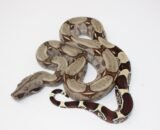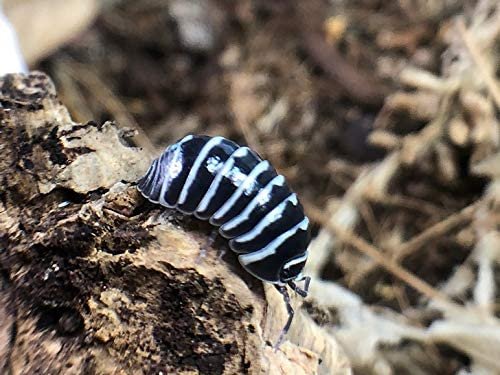Zebra isopods could be the ideal cleaning crew for your terrarium if you’re seeking for something unusual and tough. The unique black and white stripes on the bodies of these tiny crustaceans give them a zebra-like appearance.
They play a crucial part in keeping your terrarium clean and healthy in addition to being aesthetically pleasing. We’ll discuss the characteristics, maintenance needs, and advantages of zebra isopods for your terrarium in this product description.
In the world of invertebrate lovers, isopods, usually referred to as Porcellio Scaber “Zebra,” are a species of terrestrial isopod that are frequently maintained as pets.
Isopod collectors frequently choose these unusual organisms because of their eye-catching zebra-like black and white striped appearance.
Zebra isopods are easily recognisable due to their eye-catching colour. They distinguish themselves from other isopod species with their striking black and white appearance. They also have a flattened, oval-shaped body that makes it simple for them to move around their surroundings.
Check Out – Baby Jungle Fire Het T+ Albino Boa, Amazon Basin Emerald Tree Boa
Also highly robust, zebra isopods can adapt to a variety of temperatures and humidity levels. They need moisture to grow and are often housed in a substrate made of coconut coir or a combination of peat moss and sand.
They prefer temperatures between 70 and 80 °F and a relative humidity of about 70%, which can be preserved by regularly spraying their enclosure.
The ability of zebra isopods to fast breed and reproduce is another intriguing trait. They are sexually mature at a young age and have the capacity to have many broods of young throughout the course of their lifetime.
For those wishing to establish a breeding colony or simply grow their isopod population, they are the perfect species.
Zebra isopods require little upkeep, therefore taking care of them is not a difficult effort. The following advice will help you take good care of them:
Zebra isopods need a spacious, well-ventilated habitat with many hiding places for housing. As they are excellent climbers and may readily escape, a terrarium with a tight lid is the best option. They prefer a humid atmosphere, therefore the substrate should be damp but not soggy.
To create hiding places and more moisture, you can add leaf litter, bits of bark, or other natural materials.
Zebra isopods prefer temperatures between 70 and 80 degrees Fahrenheit (21-27 degrees Celsius) and humidity levels between 70 and 80 percent. A thermometer and a hygrometer can be used to measure temperature and humidity, respectively.
Check Out – Armadillidium Peraccae Isopods, Magic Potion Isopods
You can spritz the cage with water to improve the humidity if it’s too dry. But take care not to oversaturate the substrate—this might lead to mould growth and other problems.
Zebra isopods consume decomposing organic debris since they are detritivores. They can be fed a range of things, including fish food, fruits and vegetables, and leaf litter. To encourage wholesome exoskeleton growth, you can also include a calcium supplement in their food, like cuttlebone or powdered eggshell.
Cleaning: Although zebra isopods don’t produce a lot of waste, it’s crucial to keep their enclosure clean.
Replace the substrate as necessary and take away any uneaten food. Any apparent trash or mould can also be spot cleaned. It’s crucial to refrain from applying any chemicals or pesticides in their enclosure because doing so could hurt the animals.
Zebra isopods reproduce frequently and can quickly fill an enclosure. You can segregate the adults from the adolescents or get rid of some of the adults all together if you wish to manage the population. To avoid any adverse effects on the ecosystem inside the cage, it is crucial to maintain a balanced population.
Zebra isopods can provide their owners with a number of advantages, such as:
Natural cleanup crew: Zebra isopods are renowned for their capacity to remove the leftovers and garbage from other creatures, including frogs and reptiles. They can contribute to keeping the animals’ environment clean and safe by placing them in a terrarium or vivarium.
The following are some advantages zebra isopods can provide to their owners:
Zebra isopods are a natural cleanup crew since they can remove the leftover food and waste from other creatures, including frogs and reptiles. They can support the upkeep of an untainted and healthy environment for the animals by placing them in a terrarium or vivarium.
Value in terms of education: Zebra isopods can be a fun and instructive pet for both kids and adults.
They may offer a chance to learn more about the function of decomposers in ecosystems and the significance of preserving a wholesome environment for all living things.
Several animals, including some species of frogs and lizards, ingest zebra isopods as food, making them a sustainable food source.
They can be used as a sustainable food supply for these animals by growing and farming them, which can lessen the negative effects of wild harvesting on wild populations.
| Options |
10ct., 25ct., 50ct.
|










Customer reviews
Reviews
There are no reviews yet.
Write a customer review